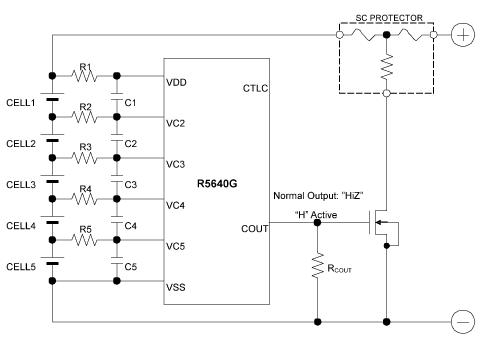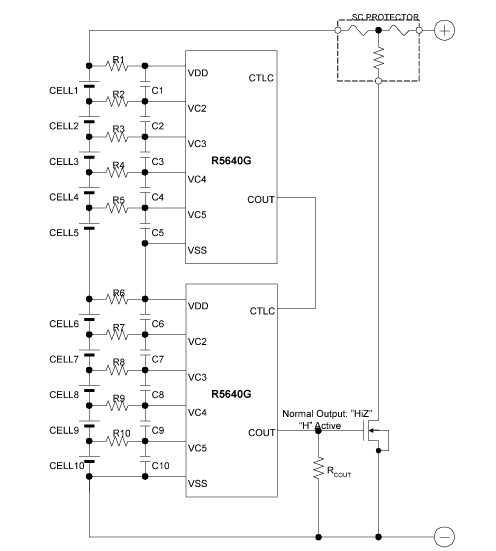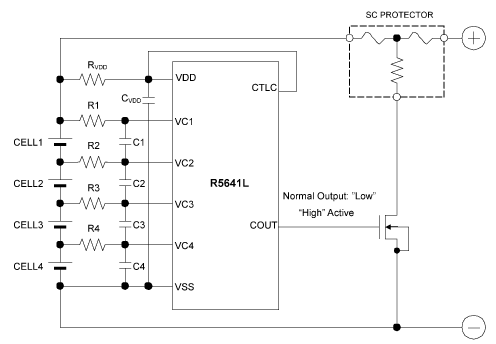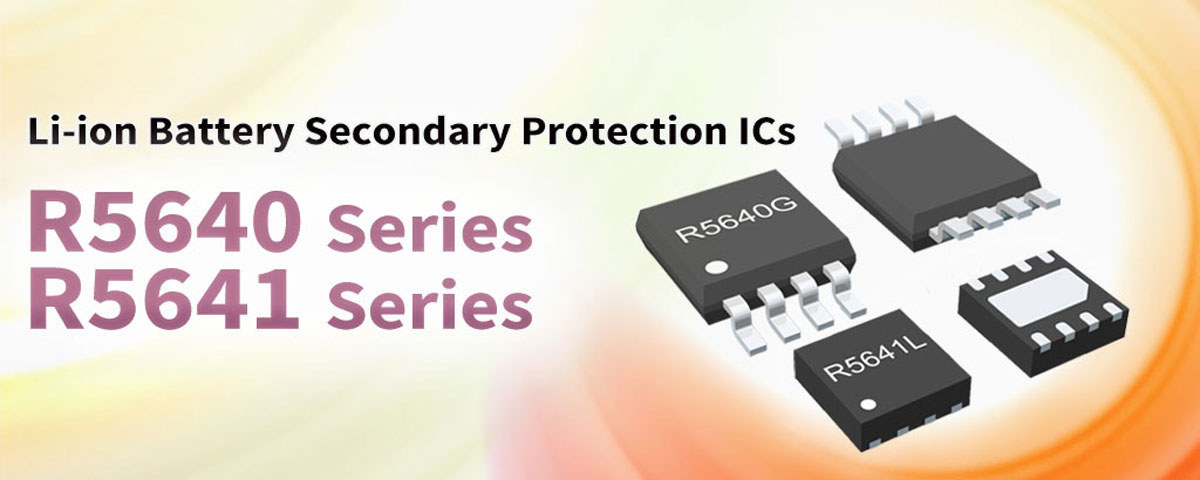Featured products - R5640 / R5641 -
Li-ion Battery Secondary Protection ICs
August 1, 2018
In recent years, the number of applications using high energy density Li-Ion batteries has increased significantly. There is a growing need to comply with functional safety standards, secondary protection ICs are developed to provide an additional safety level for Li-Ion batteries in case the primary protection circuit fails.
Li-Ion batteries are safe in general when used according to the specifications but can become a potential hazard in case of an internal or mechanical failure. Overheating, emitting fumes or even worse can be the result; also the manufacturer’s reputation can become seriously harmed when a disaster strikes.
Enhanced functional safety:
The product is manufactured by a high voltage process technology and a maximum operating voltage up to 30V. The operation of the secondary protection is fully independent from the primary protection and protects for over-charge voltage only. Once triggered and after a delay time, an external N-channel MOSFET turns on and creates a short between the battery terminals. This will cut an internal fuse that prevents the battery pack from charging again. The conclusion is that the primary protection circuitry is not working and there is something severely wrong with the battery pack. It is necessary to disable the battery pack permanently to prevent any risk of danger.
The device has internally fixed delay times for the overcharge detection, overcharge detection timer reset and overcharge release.
- Overcharge detection:
One or more cell voltages should exceed above the overcharge detection threshold voltage and delay time, the overcharge condition is detected.
- Optional overcharge detection timer reset function:
All cell voltages should become lower than the detection threshold voltage within the overcharge detection delay time. When this period is less than the overcharge detection timer reset time, the period is saved and increases by accumulation. When the accumulated period reaches the overcharge detection delay time, the overcharge is detected.
- Overcharge release:
All cell voltages should drop below the overcharge release voltage and exceeding the release delay time. If one of the cell
Low current consumption:
Significant detail for the R5640 / R5641 is that the current consumption of the ICs (resp. Typ.2.5µA / Typ.2.8µA) is equal or lower than most other available solutions on the market and contributes reducing the self-discharge rate of the battery pack. Once the battery pack is discharged and the cell voltages drop below the shutdown detector threshold, the shutdown mode will be enabled causing all internal circuits to halt in order to decrease the self-discharge rate of the battery pack to a minimum. In this mode the current consumption is lowered to 0.2µA(Max) for both R5640 and R5641.
R5640:
The R5640 in a MSOP-8 package is a suitable solution for battery packs with two to five cells. As for larger multi-cell battery packs with six cells or more, the R5640 has a control input (CTLC) and output pin (Cout) available for cascading multiple ICs. In this way, we are able to monitor battery packs with up to 10 or 15 cells for example.
-
5-cell Protection Circuits

-
10-cell Protection Circuit at Cascading

R5641:
-
The R5641 in a small DFN2020-8C package is designed for battery packs with two to four cells and has an option to add a thermal sensor to the circuit. An internal failure may result in an overheated battery pack, by connecting an external PTC resistor to the CTLC pin it is possible to monitor the temperature of the battery pack and interrupt the charging or discharging process when needed.
-
4-cell Protection Circuit

Conclusion:
The R5640 and R5641 are welcome additions to our portfolio, targeted devices are power tools, laptop computers, medical devices and other portable applications with a multi-cell Li-Ion / Li-Polymer battery pack which require additional safety measures for enhanced reliability. The products features low current consumption and have a shutdown mode when the battery pack is exhausted in order to decrease the discharging rate to a minimum.








